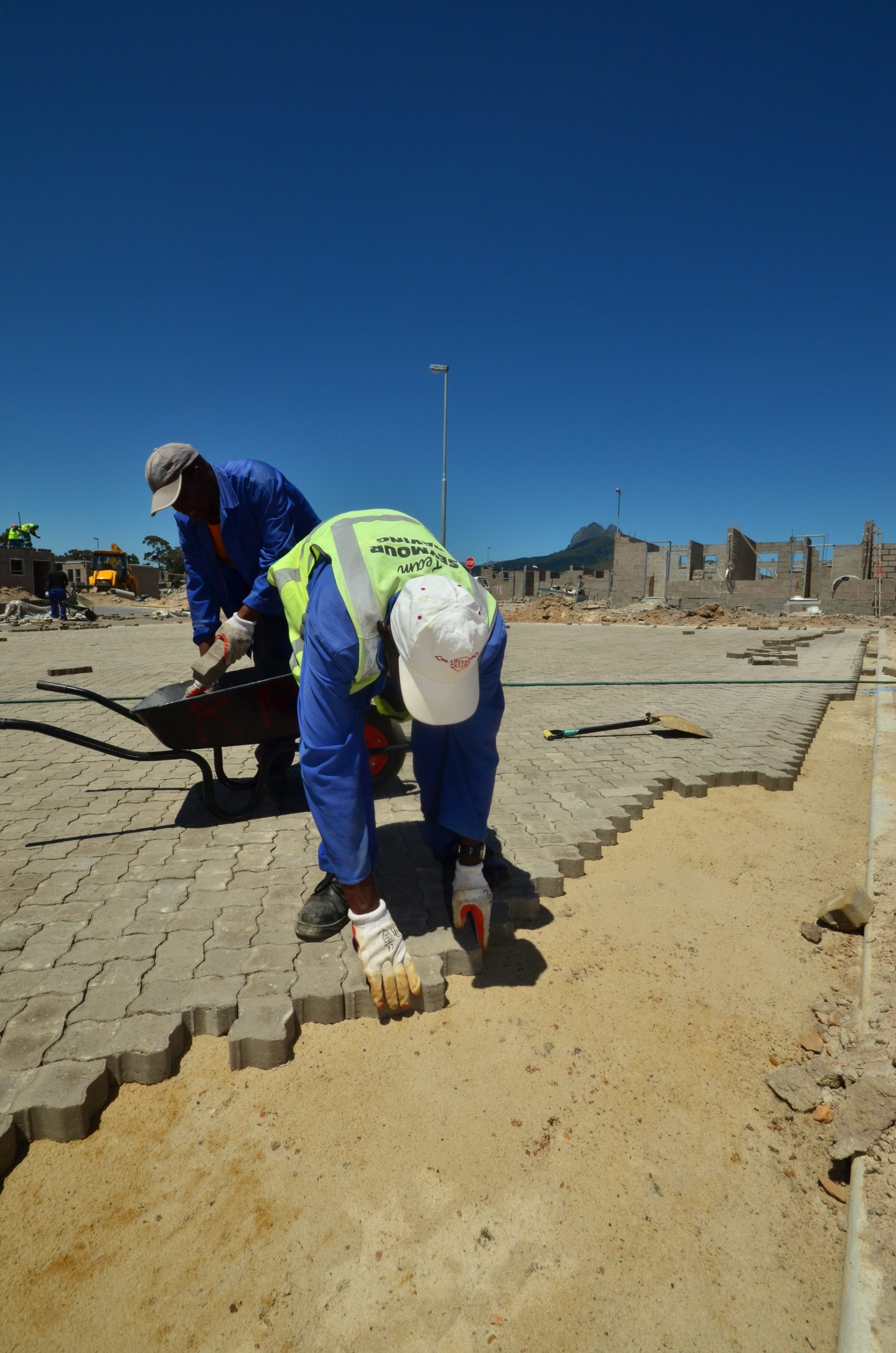South Africa’s national standard for the manufacture of Concrete Block Pavers (CBP), SANS 1058:2021, is based on several performance measurements. Ten
South Africa’s national standard for the manufacture of Concrete Block Pavers (CBP), SANS 1058:2021, is based on several performance measurements. Tensile-splitting strength, abrasion resistance and water absorption are the three major evaluation criteria but the standard also covers shape, appearance, colour, texture and dimensions. It has been this way since 2012 when tensile-splitting replaced compressive strength in SANS 1058:2010, a new standard which provided a more appropriate means of testing the performance of CBP. The standard has subsequently been updated in 2021.
Notwithstanding that the standard is now in its 12th year, many CBP specifiers, be they engineers, architects or other related professionals, are still specifying compressive strength rather than tensile-splitting strength as the defining performance measurement in tender and design documents. This disturbing revelation was recently brought to light by the Concrete Manufacturers Association (CMA) which says that all its CBP producer members are confronted with mis-specified CBP tender and design documents on a regular basis.
CMA general manager, Henry Cockcroft, says that by preparing specifications based on the old compressive strength standard, mis-specified products are being released onto the market.
“This leads to product failure which in turn results in liability claims and expensive remedial work.
“The old standard was revised because compressive strength only prevents pavers from crumbling under pressure, which is something seldom seen in CBP installations. Rather, cracking under pressure, or point load fractures, is the common cause of paving failure, and it is countered by appropriate levels of tensile-splitting strength,” says Cockcroft.
Despite the disparity between the two performance measurements there is a tenuous relationship between them and this was explained with the release of SANS 1058:2012 which introduced two new tensile-splitting classes, Class 30/2.0 and Class 40/2.6.
Class 30/2.0 calls for a tensile-splitting strength of 2MPa and a note in the specification says this is indicative of a compressive strength design of 30MPa. The second new class is Class 40/2.6 which specifies a tensile-splitting strength of 2.6MPa and is indicative of a compressive strength of 40MPa.
Based on the feedback from CMA CBP producers it would appear that some professionals remain unaware that the compressive strength standard is no longer valid even though it was revised 12 years ago. Others might think that because there is a correlation between tensile-splitting and compressive strength, one can simply specify a compressive strength of say, 30MPa, to achieve the Class 30/2.0 tensile-splitting strength. This is patently not the case.
The operative phrase in the updated standard is ‘indicative of’’ and not ‘equal to’. And even if one could accurately determine the compressive strength of a paving block based on its tensile-splitting strength, which one can’t, the reverse, namely, determining tensile-splitting strength based on a compressive strength, especially if the specifier is unaware of the ingredients in the CBP concrete mix, would be nothing more than a stab in the dark.
This has been clearly outlined in a technical note published recently by the CMA. It cites how tensile splitting strength won’t necessarily increase when compressive strength is improved.
For instance, it states that if the sand content in a concrete mix is increased it results in higher compressive strengths, due to higher density. But increasing sand content reduces sheer or tensile-splitting strength. This can mainly be attributed to the homogeneous shape of sand particles and the way they bind with cement. Conversely, if the sand content is reduced and stone content increased, tensile splitting-strength will improve. This is because the random particle shape of stone contributes to a less favourable sheer path, thereby realising a higher tensile-splitting strength.
“Therefore to avoid any confusion is vital that specifiers use SANS 1058:2021 in their design and tender documents. It is written in such way that if specifiers adhere to its two performance classes which cover tensile-splitting strength, abrasion resistance and water absorption, there is not much that can go wrong with a CBP installation providing it is laid according to the correct installation specifications. And even if specifiers do not refer to the standard, they should at least use tensile-splitting rather than compressive strength as their performance measurement.
“It’s hardly surprising that CBP remains the world’s most versatile method of pavement construction: it is labour intensive and creates job opportunities; its weathering is totally different to any other type of paving material; and its durability properties are much higher than most other types of paving materials,” concludes Cockcroft.


COMMENTS